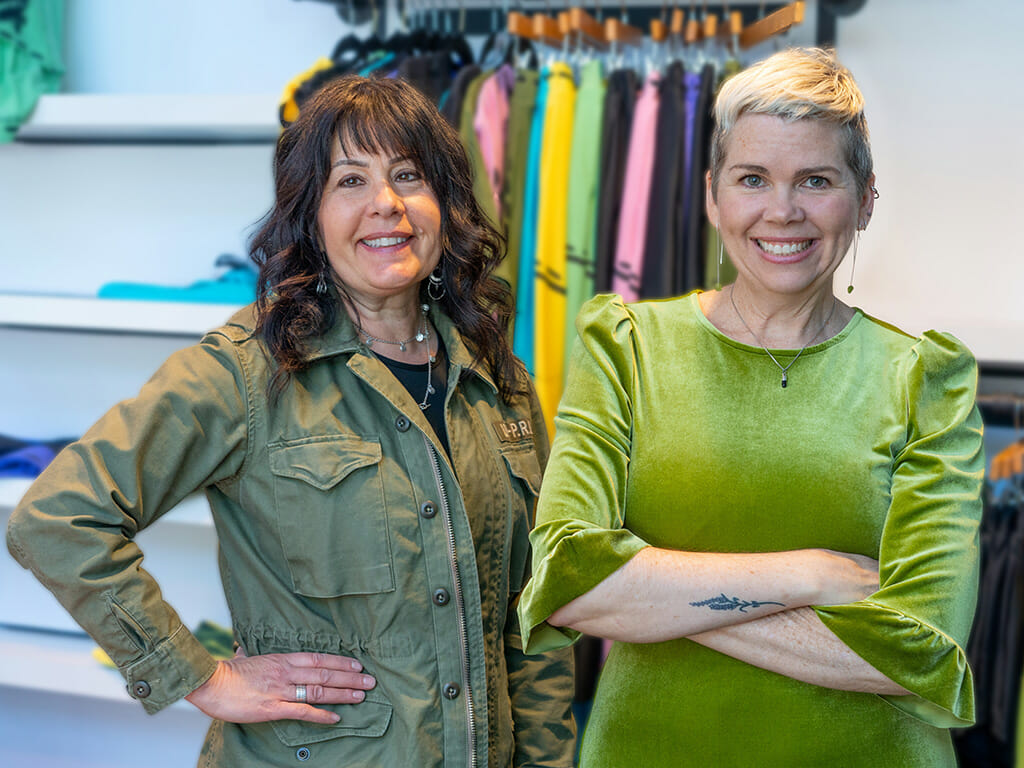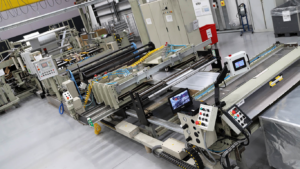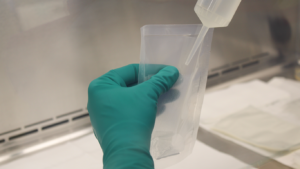The need for clothes goes all the way back to Adam and Eve. Little did Eve know, when she took a bite of the forbidden fruit, she would inspire centuries of evolution in fashion. Clothing has become art, self-expression and a multi-trillion-dollar industry. And fashion has become big business in Phoenix.
Although when we think of fashion most of our minds immediately think of New York, Paris or Milan, the industry has also blossomed right under our noses in Arizona.
DEEPER DIVE: 9 summer fashion trends that will keep you cool and business appropriate
Angela Johnson, co-founder of the fashion incubator FABRIC, is an Arizona native, but began her career in Los Angeles.
She earned a degree in fashion design from the Fashion Institute of Design and Merchandising and went on to work in various jobs throughout the industry before launching her own brand in the 1990s.
“I would contract out each step along the way,” she says. “I’d go to pattern makers, graders, marking companies, cutting services and sewing contractors. I would source materials, and I would literally drive the fabric from one place to another and check everything. And that was the secret sauce to be able to make small batches.”
She moved back to Arizona for her family and found that it was impossible to continue her brand because the resources she needed didn’t exist in Arizona, and she knew she needed to be where she was manufacturing to check each step of the process.
With her brand shut down, Johnson started teaching and consulting.
“[I started] helping these other brands,” she says, “who were either hobbyists: They were selling out of their own house and wanted to grow and start manufacturing. Or they were people with a really good idea, and they just didn’t know anything and just needed help understanding what it would take to make clothing. That led into creating a directory for Arizona so that everybody could find each other.”
Johnson explains that the directory quickly “filled up with a bunch of people who needed resources.”

Phoenix fashion business
Johnson met Sherri Barry, co-founder of the fashion incubator FABRIC, during her consulting days. After working in retail management for 20 years, Barry decided to follow her first dream and attempted to launch her own brand remotely. She ran into big problems.
Barry sent her marker file, all the patterns laid out close together, to a manufacturing company, and something she never could have imagined happened.
She sent her marker file in inches; the company imported it in inches; then they exported it in centimeters, so it would match their system but did not change any of the numbers to be the correct sizes.
“They manufactured 5,000 pieces of my order in doll size and shipped them to me,” Barry says. “I ended up having to pay for it. It was over $30,000. I couldn’t fulfill the order, and it shut down my business.”
Barry and Johnson took different paths in the fashion industry but both came to the same conclusion: Arizona’s fashion industry needed resources.
“Fashion is a really hard business,” Barry says. “There’s a lot of obstacles to overcome and the resources [needed to overcome] those obstacles are pretty scarce because a lot of this is done overseas right now.”
That’s when FABRIC was born to help pump up the Phoenix fashion business.
Fashion and Business Resource Innovation Center (FABRIC) has allowed the fashion industry in Arizona to reach new heights since 2016.
Over a thousand apparel entrepreneurs have utilized the resources in the past seven years, and both Johnson and Barry hope to continue helping even more.
Wendee Saunders launched her brand, eclisse, with help from FABRIC and is using resources there to manufacture cute sun protective clothing.
“It’s the newest addition to your beauty routine, keeping you protected from the aging rays of the sun,” she says.
Saunders is excited to finally be launching her own brand but knows she could not have done it without FABRIC.
“I have only ever been a fashion and beauty consumer,” she says. “Now being on the other side of actually creating a brand — there’s so many ins and outs, and the knowledge that is in-house has been invaluable.”
Getting creative
David Parrish actually launched his brand, Off The Trail Recreation (OTTR), on his own in 2021. He says his initial launch went well, but he soon found himself in a “sophomore slump.”
He says, “connecting with Sherri and Angela and their team got me out of that funk, and it got me to start using other parts of my brain that I obviously wasn’t using. And it’s been incredible.”
Jolene Melendez, Kyle Norgren and Dillon Taylor founded MAVERIX, a new brand of stylish golf clothes.
“It’s really exciting,” says Melendez. “We’re excited to get our product out. We’re excited to see how everybody likes it, and it’s definitely something that’s not been done before, nor is it in any golf shops or anything like that.”
Saunders and the MAVERIX team utilized a specialized program created by FABRIC called the “Road Map.” It is available through the Apparel Entrepreneur Membership and is a digital step-by-step guide that houses hundreds of resources and explanations for how to build a fashion brand and manufacture the product.
According to the FABRIC website, “It’s like having a virtual production manager, technical designer, quality controller, business coach, and branding expert guide you.”
The Road Map is a project Johnson says she has been working on for almost her entire life.
“I have a lot of knowledge about everything that it takes [to start a fashion business],” Johnson says. “When the pandemic happened, it gave me that opportunity to sit down in front of my computer, pull all of those resources together in a format that can be easily shared with somebody where I don’t have to be the person, walking them through it myself day to day.”
Now, apparel designers from around the world can access this knowledge through the Apparel Entrepreneur Membership and learn to launch their own brands on their own time.
FABRIC recently relocated to a new facility in Tempe where the incubator is leaning into their technology and specialized equipment to create the world’s first “phygital” fashion innovation center which opened in April.
“There’s a digital production flow going on out there that nobody sees,” Barry says. “All the information for that brand’s specific garment, when that order comes through, transmits through the factory so that we can manufacture it with the exact materials and trims that designer picked out, get the right labels in it, get the custom print on it — if that’s part of their brand — get the construction right all the way … And then at the end we can pull that order for that customer, print the label and ship direct out of the factory, even package it exactly the way the designer wants.”
This process is known as on-demand manufacturing, but Barry says FABRIC has shifted a little bit to do “batched on demand.”
This means that they let the orders stack up a little to make the process easier to manage.
“It’s not a lot, but 20 or 25 and it depends on the complexity of the garment,” Barry says.
Tailored for tech
The new building is equipped with a digital production floor which gives designers access to all the technology needed to create 3D digital renderings of their garments. The software has all the knowledge of the different fabrics — how it will look, fit and lay depending on what it is made of — so a designer can see their work come to life and create digital samples.
Samples are test garments used to allow designers to see problems and mistakes, so they can perfect the piece. Digital samples allow designers to do all the work they need to without cutting or sewing anything.
The manufacturing floor of the new building is equipped with the Kornit Presto printer. Barry explains that most sublimation printers only allow designers to print designs onto polyester — “a pretty unsustainable material” — but not this printer.
The Kornit Presto allows designers to print on almost any material they can imagine from cotton to chiffon — one designer even printed on cactus leather. Johnson says it allows designers to create really unique pieces to sell.
Some might say that FABRIC is currently leading Arizona’s growing fashion industry, but it certainly existed before FABRIC, too.
Arizona fashion was being reported on before the state even earned its statehood. An 1882 edition of Arizona Daily Star reported, “It would be difficult to find anywhere ladies who pay more attention to the elegance and beauty of costume than those in Arizona.” The article went on to describe elaborately designed dresses donned by Arizona residents.
An early brand in Arizona is Saba’s Western Wear founded in 1927.
Arizona Costume Institute was founded to assist the Phoenix Art Museum in honoring fashion with a permanent collection that originally started in 1966. Over 8,000 objects representing fashion for men, women and children from the late 17th century to the present are now housed in the collection.
The first Phoenix Fashion Week has been bringing fashion shows to life each fall since 2008. Scottsdale Fashion Week began around the same time and got revamped in 2017 when Steve LeVine Entertainment took it over.
State Forty-Eight, an Arizona apparel brand, was founded in 2013 and has grown to be one of the most well-known local brands in the state.
Arizona is really coming up in the fashion industry and both Johnson and Barry have big hopes for the industry’s future.
Johnson says “I hope the fashion industry embraces sustainability a lot more than it is. People are trying to embrace it, but obviously it takes a lot of systematic change, and the big brands are the ones that have to lead that.”
Barry would also like to see a more sustainable industry overall, but says “hopefully here in Arizona, the cotton that’s grown in Casa Grande can be spun into beautiful quality cotton materials that can be designed here locally, manufactured on demand.”




